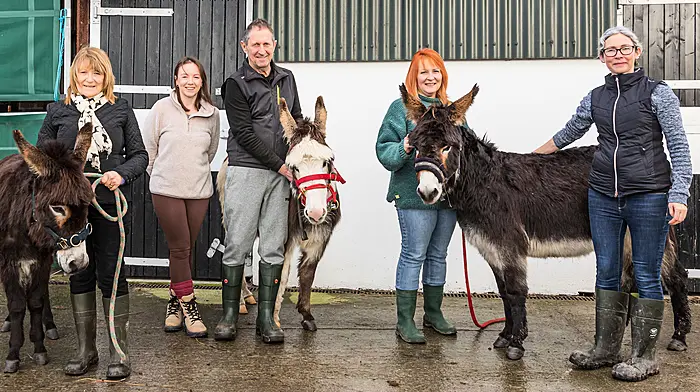by TOM BARRY
I HAVE a friend who owns his own business that is well known in West Cork, and from the outside the business looks like it is doing great but on the inside I’m not so sure, as my friend is a bit of a control freak.
He looks after recruitment, finance, marketing, operations, purchasing and sales.
He employs 14 staff and works harder than any of them. His plan is to sell the business at some stage and retire comfortably but if he leaves the business, will it crumble when he walks out the door because of the way he has been operating the company?
He has left himself open on so many fronts, but the good news is that there are also so many ways in which I can help him to radically improve his position.
Some business owners don’t draw anything from the business in the early years and those that do reward themselves in different ways- dividends, expenses, drawings etc.
It is critical, however, that business owners draw PAYE earnings as early as possible, no matter how small, to create service.
From Revenue’s point of view, the number of years of service you have is dictated by the number of years you had PAYE earnings.
The more service you have improves your exit from the business on two fronts – you create more scope for pension funding and the company can pay you more as a termination payment.
On too many occasions I have witnessed spouses doing all the payroll or administration without being paid.
Then the company becomes cash-rich and may want to plough some of the resources into a pension for the spouse, but can’t because the spouse has no service. If a family member is doing any work within the company, pay via PAYE.
Isn’t it somewhat reckless for a business owner not to hedge their bets against ill-health which could cause the business to crumble? Ensuring your income through income protection and critical illness is a simple, cost-effective hedging strategy and the best thing of all is that the company can pay for it – so no excuses.
Most companies accumulate surplus cash over time, and it needs to be extracted in the most tax efficient way possible, but in the interim, you need to make that capital work more smartly for your business.
When it comes to investing corporate cash, the options are limitless insofar as the company can buy deposits, shares, funds or property. Revenue forces companies to distribute or pay out their investment income to avoid a surcharge.
Say the company wanted to invest in a property, then they could go to an auctioneer and buy a property, rent it out, account for the income in the accounts and suffer CGT on any gains.
Being a close company, the business would also have to distribute the rent to avoid paying additional tax.
Alternatively, the company could opt to invest in a property fund, thus giving them exposure to the same investment returns without the bureaucracy and avoid any surcharge issues until the investment matures, or after eight years, if earlier.
If you are in business with a partner or partners, and one of them dies unexpectedly, then their spouse or children could become your new business partner.
Wouldn’t you prefer to have the choice as to whether you want them in the business or not? That is where shareholder protection comes in.
With business insurance the partners insure each other and agree to give first preference on their shareholding to each other. If you can work with the spouse or children, then you keep the cash paid by the insurance company. If not then you pay the spouse or children the cash from the insurance company for the shares in the company.
Retirement relief from capital gains tax can potentially reduce a business owner’s tax bill to zero when they dispose of their shares in the company and the beauty of it is that you don’t have to retire from the business at all, but you must sell all your shares to another party (typically a family member) and stay doing whatever it was they were doing within the company.
This is a detailed and complex process so tread with caution and getting proper tax advice is a must.
A pension is another way of extracting money out of a business and should be seen as a complicated savings plan. There are rules on how much you can put in, when and how you take it out and what you can do with your savings when they’re in the pension.
There is no other savings plan in the State that allows a business to contribute up to €2m to it without you or the company paying tax.
A termination payment is where a business can potentially pay up to €200,000 tax-free.
However, the tax-free amount is heavily influenced by your length of service and that’s why drawing a salary should be the first thing on the ‘to do’ list.
This is not the same as the €200,000 allowable tax-free under pension legislation, so if you play your corporate cards correctly you could have up to €400,000 tax-free in total.
This, again, is complicated and the rules around termination payments and their interaction with pension payments can be mind- numbing, so professional tax advice is needed.
Staff retention, especially that of a star performer in the current environment, is a must for most good businesses.
One of the solutions is a pension. It needs to be decent enough to become an influencer, death in service benefit etc and you can put in a few conditions such as – 1 year service before you can join; 2 years of contributions needed before a clawback.
This way you can potentially dangle a carrot over them for three years.
So have I told my friend all this?
Of course – and he has taken on board a lot of my suggestions and the company is now in a more comfortable place with a proper business exit plan, key staff members taking on more responsibility and – most importantly – my friend has more time for family and friends.
• Tom Barry QFA RPA SIA FLIA is a financial consultant with FDC Financial Services Ltd.








